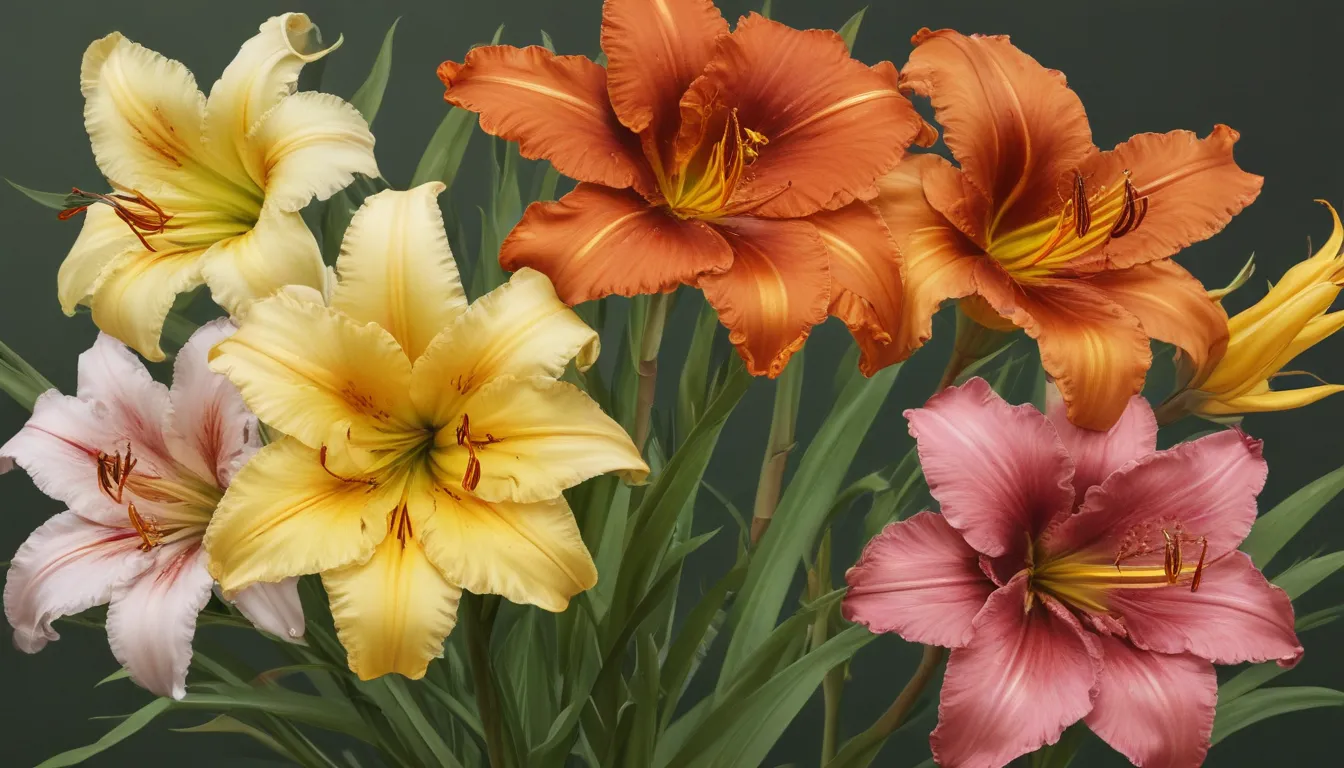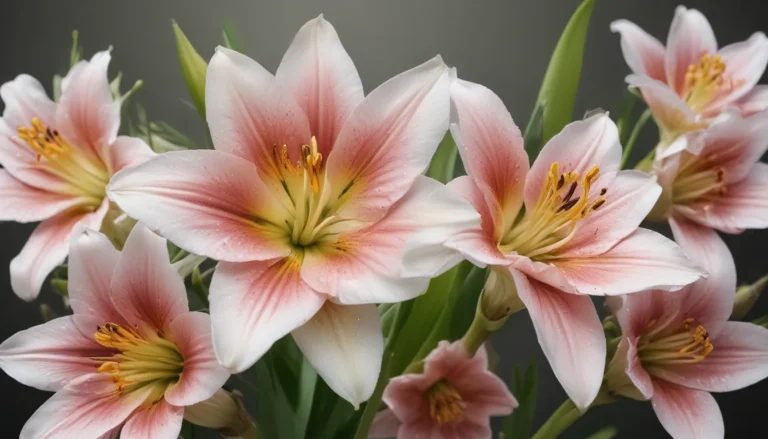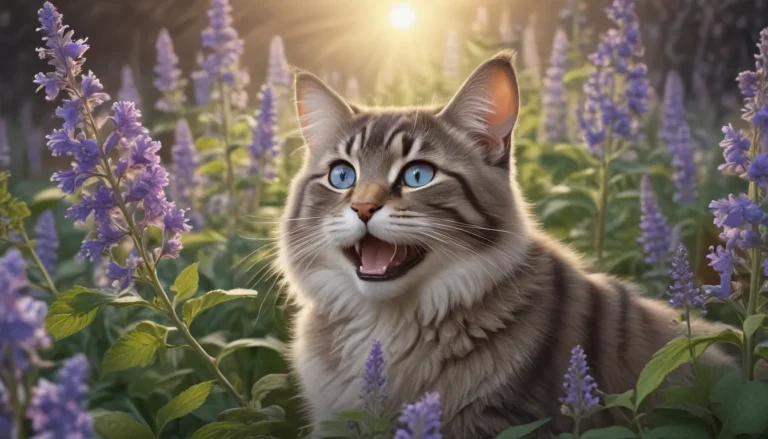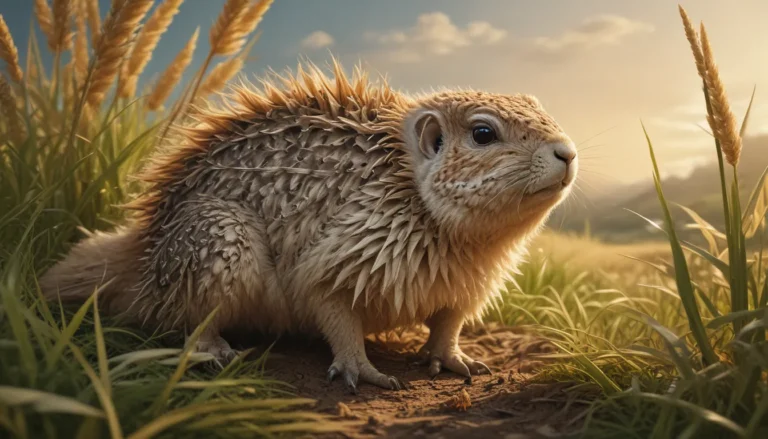The pictures we use in our articles might not show exactly what the words say. We choose these pictures to make you interested in reading more. The pictures work together with the words but don’t take their place. The words still tell you the important facts.
Are you mesmerized by the vibrant blooms and versatility of daylilies, also known as Hemerocallis? These captivating plants are more than just a pretty sight in your garden; they hold a treasure trove of intriguing facts waiting to be explored. From their rich cultural history to their unique biological characteristics, Hemerocallis are truly remarkable flowers that deserve a closer look. In this article, we will delve into 10 fascinating facts about Hemerocallis that will deepen your appreciation for these stunning plants. So, let's uncover the secrets of daylilies and embark on a journey of discovery!
The Enchanting World of Hemerocallis:
- Hemerocallis, or daylilies, come in over 80,000 varieties and attract pollinators.
- They are low-maintenance, edible, and have a rich history in folklore and mythology.
- Hemerocallis flowers open and close each day, symbolizing maternal love in some cultures.
- They are vibrant, resilient, and have been cultivated for centuries.
Exploring the Fascinating Realm of Hemerocallis:
Hemerocallis: A Member of the Liliaceae Family
Hemerocallis, commonly known as daylilies, belongs to the Liliaceae family. These flowering plants are native to Asia and are cherished for their vibrant and showy blooms that add a touch of elegance to any garden.
Over 80,000 Registered Cultivars of Hemerocallis
Hemerocallis enthusiasts have created over 80,000 registered cultivars, making them one of the most extensively hybridized perennial flowers in the world. Each cultivar showcases unique characteristics and colors, adding a diverse range of options for gardeners.
The Daily Rhythm of Hemerocallis Flowers
True to their name, Hemerocallis flowers open in the morning and close in the evening. Each bloom lasts only one day, but the plant produces multiple buds on each stalk, ensuring a continuous display of colorful flowers throughout the blooming season.
A Vibrant Spectrum of Colors
Hemerocallis flaunts a wide range of colors, from bold reds, oranges, and yellows to softer pinks, purples, and whites. Whether you prefer eye-catching and striking hues or subtle and delicate tones, there is a Hemerocallis variety to suit every taste and preference.
Attracting Pollinators with Blooms
The attractive blooms of Hemerocallis serve as a magnet for pollinators such as bees, butterflies, and hummingbirds. These vital pollinators play a crucial role in the ecosystem by aiding in the transfer of pollen from one flower to another, ensuring the plant's reproduction and biodiversity.
Low-Maintenance Perennials
Hemerocallis are an excellent choice for gardeners seeking low-maintenance plants. These hardy perennials are drought-tolerant, disease-resistant, and adaptable to various soil conditions, making them an ideal addition to any garden landscape.
Culinary Delights with Hemerocallis
While primarily valued for their ornamental beauty, some Hemerocallis flowers are edible and can be incorporated into culinary creations. The petals can enhance the visual appeal and flavor of dishes, salads, or even herbal teas, offering a unique gourmet experience.
Rich History of Cultivation
Hemerocallis has a storied history of cultivation spanning centuries. Revered for their beauty and adaptability, these plants have been cherished in gardens across different cultures worldwide, showcasing their timeless appeal and versatility.
Symbol of Maternal Love
In certain cultures, Hemerocallis is associated with motherhood and maternal love, symbolizing affection and appreciation for mothers. It is often gifted on special occasions as a token of love and gratitude, highlighting the emotional significance attributed to these charming flowers.
Folklore and Mythology of Hemerocallis
Hemerocallis has found its place in folklore and mythology, particularly in Asian cultures where it is believed to possess magical qualities. Associated with beauty, prosperity, and protection against malevolent spirits, Hemerocallis holds a special place in the cultural narratives of various societies.
Embracing the Beauty and Wonder of Hemerocallis
In conclusion, Hemerocallis, or daylilies, are captivating plants that bring beauty and versatility to gardens around the world. From their origins in Asia to their ability to thrive in diverse environments, Hemerocallis continue to enchant plant lovers with their vibrant colors and enchanting blooms. Whether you are an experienced gardener or a novice enthusiast, incorporating Hemerocallis into your landscape can infuse your outdoor space with vibrant colors and lively energy. Their adaptability, low maintenance requirements, and attraction to pollinators make them a delightful choice for any garden setting. So, why not venture into the enchanting world of Hemerocallis and experience the joy and beauty these remarkable plants can bring to your own garden?
Frequently Asked Questions About Hemerocallis
- Are daylilies and Hemerocallis the same thing?
-
Yes, daylilies and Hemerocallis are interchangeable names for the same plant species.
-
Can I grow Hemerocallis in containers?
-
Absolutely! Hemerocallis thrive in containers as long as they have proper drainage and ample space for root growth.
-
How often should I water my Hemerocallis?
-
Hemerocallis prefer moist soil, so be sure to water them deeply and regularly, especially during dry spells, while ensuring good drainage to prevent waterlogging.
-
Are Hemerocallis deer resistant?
-
While Hemerocallis are not a top choice for deer, they are not entirely deer-proof. It's advisable to take precautions such as fencing or repellents in areas with deer presence.
-
How often do Hemerocallis bloom?
-
Hemerocallis have a prolonged blooming period with each flower lasting a day but producing multiple blooms throughout the season, offering a continuous display of colorful flowers.
-
Can I eat Hemerocallis?
-
Some Hemerocallis varieties are edible, but it's essential to verify the species before consumption. Consult reliable sources or experts for accurate information on edible daylilies.
-
Do Hemerocallis require a lot of sunlight?
-
Hemerocallis thrive in full sun to partial shade, ideally receiving at least six hours of direct sunlight daily to encourage abundant blooming.
-
How do I divide Hemerocallis?
-
Wait until late summer or early fall when foliage has died back to divide Hemerocallis plants. Lift the clump, separate individual plants, and replant ensuring each division has adequate roots.
-
Can I plant Hemerocallis in various soil types?
-
Hemerocallis are adaptable to different soil types but prefer well-drained soil rich in organic matter to thrive and bloom abundantly.
-
How tall do Hemerocallis grow?
- Hemerocallis heights vary by variety, typically ranging from 1 to 4 feet, with some giant varieties reaching up to 6 feet or more, creating impressive focal points in the garden landscape.
Unveil the enchanting world of Hemerocallis and immerse yourself in the beauty and wonder of these captivating flowers. Explore their rich cultural history, discover their unique biological traits, and appreciate their vibrant colors and resilience. With Hemerocallis in your garden, you'll not only enhance your outdoor space with beauty and charm but also invite pollinators and wildlife to thrive in a colorful oasis of blooms. Join the journey of discovery with Hemerocallis and witness the magic of nature unfolding in your own backyard!






